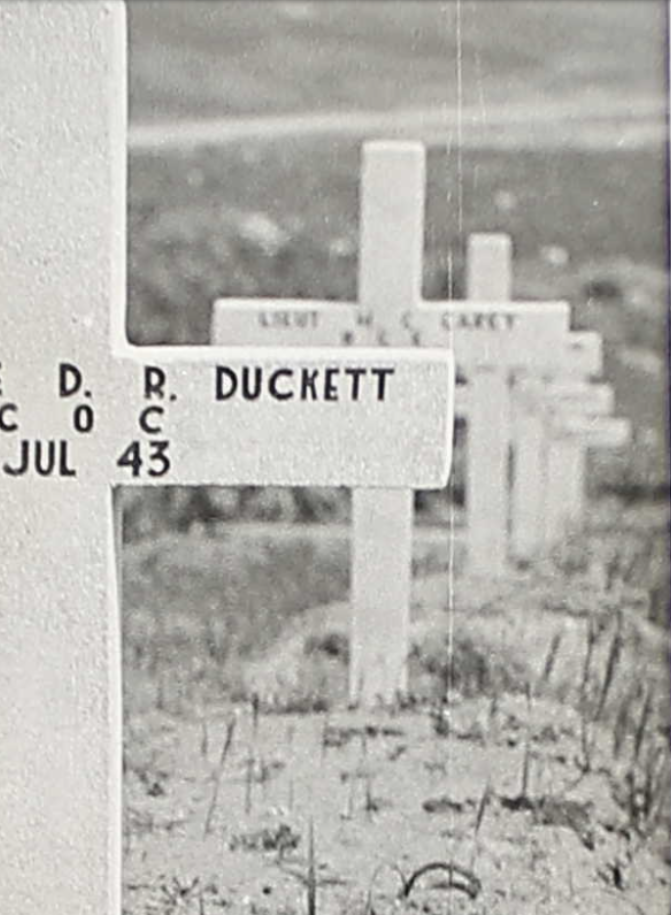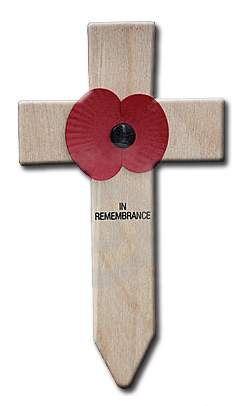










































In Memory of
CAREY, HUGH CAMPBELL, H C
Service: Lieutenant
Royal Canadian Engineers,4 Field Coy
who died 24 age
18 July 1943
AGIRA WAR CEMETERY, SICILY

Hugh Campbell Carey was born in Winnipeg, Greater Winnipeg, Manitoba, the son of Raymond and Dorothy Claire (Heubach) Clarey and the younger brother of sister Honor and Barbara Claire.
He later had a younger brother, John Elton.
Before moving to Winnipeg in 1909, his father had established himself as a successful architect in Detroit.
He is credited with designing numerous homes and buildings in both cities but took the family back to Detroit in 1921. They divorced in 1930s with Claire later marrying Winnipeg lawyer Humphry Ringler Drummond-Hay.
Carey continued to work as an architect in Detroit until 1937 when he returned to London, England.
In 1947, he married again. He died in London on 20 August 1975.
Hugh's sister, Honor, moved to the north of England in 1934 and was living in Langham, Scotland in 1943, listed as Hugh's next-of-kin in his war record.
 Hugh enrolled in the Royal Canadian Engineers in London, England on 28 November 1940 and was sent to 1 Canadian Reinforcement Holding Unit (1 CERU) at Guillemont Barracks in Hampshire in southern England, for basic and sapper training. Based on his education and experience, he was appointed Acting Corporal in March 1941 and Acting Lance Sergeant in April. He was then sent to the Officer Candidate Training Unit (Royal Engineers) as an Acting Sergeant.
Hugh enrolled in the Royal Canadian Engineers in London, England on 28 November 1940 and was sent to 1 Canadian Reinforcement Holding Unit (1 CERU) at Guillemont Barracks in Hampshire in southern England, for basic and sapper training. Based on his education and experience, he was appointed Acting Corporal in March 1941 and Acting Lance Sergeant in April. He was then sent to the Officer Candidate Training Unit (Royal Engineers) as an Acting Sergeant.On graduating in October 1941, he was given a commission as a Lieutenant and sent back to 1 CERU in November 41 as an instructor. As such, he was often sent away on courses which he ended up teaching at 1CERU - military duties, camouflage, combined operations and driver/mechanic training to name a few.
Hugh left 1 CERU and after a short time over the summer at the 2nd Field Park Company, RCE, he joined the 4th Field Company in September 1942. As part of the 1st Canadian Division, the company was well into an intense period of training that would take them onto the beaches of Sicily as being among the best prepared and best-trained soldiers Canada had ever produced. Training included the full range of sapper skills and topics - mine clearance, demolitions, road construction and repair, small arms training, water supply and even rudimentary German language. They conducted exercises requiring bridge and raft construction over wet and dry gaps throughout the training areas in southern England. While sappers mastered their skills, officers were often at Brigade and Division HQs on TEWTs (Tactical Exercises Without Troops) focusing on assault landings. They spent months in Scotland on amphibious and mountain warfare. Exercises requiring bridge and raft construction over wet and dry gaps, often with other units were conducted throughout southern England. physical fitness and endurance were stressed. A 15-mile forced march in four hours was routine.
In June 1943, the Company was in Scotland and had just completed three weeks of mountain warfare when they took part in an amphibious landing exercise on the west coast of Scotland. They were issued tropical clothing and trained to waterproof their own vehicles. By this time, the whole division was on edge with tensions rising and rumours spreading about where and when they would see action. Would it be Greece? Crete? Sicily? No sooner was the exercise completed than they were issued tropical clothing and loaded onto ships for a week-long amphibious landing exercise and carried out a beach landing, all troops were embarked wearing tropical clothing on 30 June when they were told the 1st Canadian Division was now part of Montgomery's 8th Army and were headed to Sicily.
Ten days later, on 10 July 1943 and after a concentrated naval and air attack along the landing beaches, the 1st Canadian Division landed at Pachino along the southeast coast. The 1st and 3 rd Field Companies landed in the assault with the 1st and 2nd Canadian Infantry Brigades. The 4th Field Company followed up with the 3rd Brigade later that afternoon.
For the first week as the Canadian moved quickly into the hills, they met only light Italian opposition. That changed when leading infantry elements came head-to-head with the German Army's Hermann Göring Division. The Germans skillfully used demolitions, ambushes and covering ire to slow and frustrate the Canadian drive. The Engineers were forced to work under fire to repair routes, build diversions, fill craters and lift mines and booby traps. The infantry pressed forward but would soon bog down if supply routes were not kept open.
After having driven the defenders back to the town of Grammichele, the Canadians were preparing for what would be the first divisional-level attack of the war on Grammichele, with the 3rd Canadian Infantry Brigades leading and the 1st Canadian Infantry Brigade providing flank protection, planned for the morning of 18 July.
Meanwhile, during the night of 17/18 July, while the sappers were hard at work repairing the damaged roadways and maintaining diversions along the route, the enemy continued to heavily shell the area. Major J. Blair, Officer Commanding the 4th Field Company was wounded and, about a mile from the disputed corner, Lieutenant H. C. Carey was killed - presumably by mortar fire.
Lieutenant Hugh Carey was initially buried by the side of the road to Valguarnera and later moved to the Canadian War Cemetery in Agira. He was 24 years old. Source: Engineers Association Canadian Miltary
 "The Van Doo officer insisted on inspecting the ground for booby traps or mines before giving permission for the enigneers to begin to work. As engineers and infantry worked shoulder to shoulder filling in the crater, the Germans blasted the area with a continuous bombardment that clearly indicated they were alert to the Canadian mechanized advance. A half-hour later the job was finished, but the enemy shelling had taken its toll for the engineers. Both the platoon commander, Lieutenant Hugh Carey, and the regimental commander, Major Jim Blair, were hit by shrapnel, along with several other engineers. Blair was evacuated to the nearest casualty clearing station with severe wounds, but Carey died on the spot.."
"The Van Doo officer insisted on inspecting the ground for booby traps or mines before giving permission for the enigneers to begin to work. As engineers and infantry worked shoulder to shoulder filling in the crater, the Germans blasted the area with a continuous bombardment that clearly indicated they were alert to the Canadian mechanized advance. A half-hour later the job was finished, but the enemy shelling had taken its toll for the engineers. Both the platoon commander, Lieutenant Hugh Carey, and the regimental commander, Major Jim Blair, were hit by shrapnel, along with several other engineers. Blair was evacuated to the nearest casualty clearing station with severe wounds, but Carey died on the spot.."(source: Operation Husky page 213 by Mark Zuehlke)












